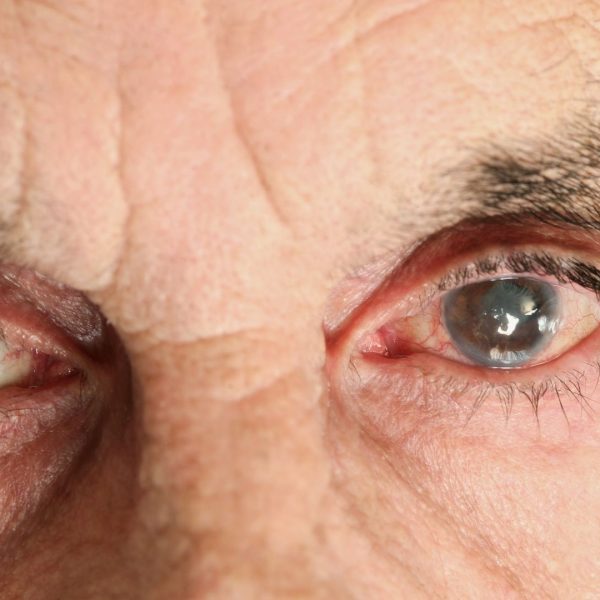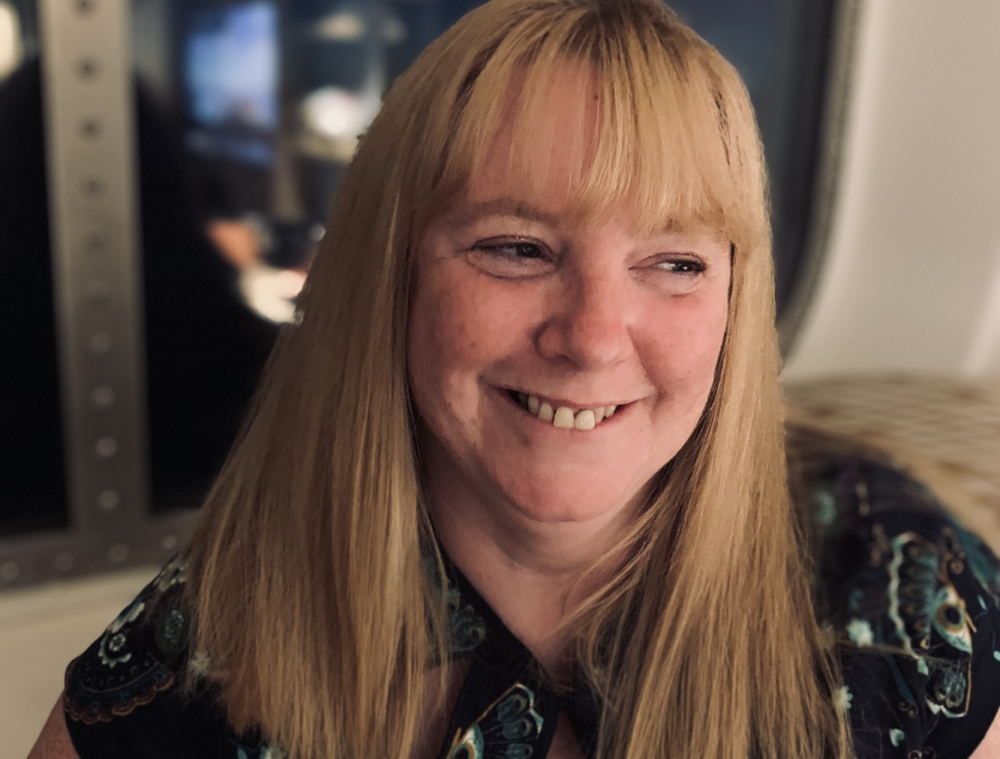What Is Glaucoma?
Glaucoma is a group of eye diseases that damage the optic nerve (a bundle of millions of nerve fibres which transmit electrical signals from the retina at the back of your eye, to the visual cortex in your brain). This damage is usually caused by fluid buildup in the eye, which increases eye pressure.
Glaucoma is the leading cause of sight loss among those of working age, and is often referred to as ‘the sneak thief of sight’ as it can take a long time for symptoms to develop, but any damage done is irreversible. As such, regular eye tests are vital so the condition can be diagnosed and treated quickly, ensuring sight can be preserved. If untreated, vision loss starts at the outside of your visual field and gradually affects your central (detailed) vision.
2% of over 40s
It’s thought that glaucoma affects roughly 2% of the UK population aged over 40 years. In the next decade, cases of primary open-angle glaucoma are expected to increase by 15.9%.
Types of glaucoma
There are four main types of glaucoma:
Primary open-angle glaucoma
This is the most common type of glaucoma where the filter that drains fluid from the eye becomes partially blocked. As a result, pressure in the eye gradually increases and slowly damages the optic nerve.
This type of glaucoma is painless and vision loss is so gradual that it may not be noticed until significantly impaired.
Primary angle-closure glaucoma
The filter that drains fluid from the eye is located between the iris and the cornea. When someone’s iris bulges forward and narrows or blocks the part of the eye where the filter is located, pressure increases in the eye. This can happen quickly (acute angle-closure glaucoma) or gradually (chronic angle-closure glaucoma).
Acute angle-closure glaucoma is a medical emergency.
Secondary glaucoma
Secondary glaucoma includes any type of glaucoma where eye pressure, and resulting damage to the optic nerve, is caused by another condition. Types of secondary glaucoma include:
- Uveitic (inflammatory) glaucoma
This type of glaucoma can happen in people who have uveitis.
- Neovascular glaucoma
Neovascular glaucoma occurs when your eye makes extra blood vessels that cover the filter that drains fluid from the eye, increasing pressure. It is always associated with other conditions, most commonly diabetic retinopathy.
- Pigmentary glaucoma
Pigmentary glaucoma occurs due to pigment dispersion syndrome (PDS) where pigment (colour) from your iris flakes off and blocks the part of the eye that drains fluid, increasing pressure in the eye.
- Traumatic glaucoma
Traumatic glaucoma occurs when pressure inside the eye is increased due to an injury to the eye, and can often appear years after the injury took place.
Congenital glaucoma
Currently, there is no cure for CBS, but researchers are working to learn more about this condition.
Saving sight through pioneering research
Symptoms Of Glaucoma
Symptoms vary according to the type of glaucoma.
For most types of glaucoma it can take a long time for symptoms to develop, and significant damage to the eye and vision can be done before symptoms are noticed. This is why regular eye tests, which can identify glaucoma at an early stage, are so important.
Once symptoms do start to develop, they usually begin with gradual development of small blind spots starting in your peripheral (side) vision. Progression of this vision loss is so slow that it is often not noticed until a significant amount of vision has been lost. If untreated, the entire optic nerve can be destroyed leading to blindness.
Acute angle-closure glaucoma, does have noticeable symptoms as the build up of pressure in the eye in this case is much faster. Symptoms of acute angle-closure glaucoma vary but may include any of the following:
- Blurred or narrowed field of vision
- Severe pain in the eyes
- Red eyes
- Seeing halos or rainbows around lights
- Nausea
- Vomiting
- Headaches
Acute angle-closure glaucoma is a medical emergency and you should seek immediate medical assistance if displaying symptoms. Fast medical attention can prevent blindness.
Congenital glaucoma can also show the following symptoms in babies and young children:
- Jerky eyes (nystagmus)
- Unusually large eyes
- Watering eyes
- Cloudy eyes
- Sensitivity to light
- Poor vision
Causes And Risk Factors For Glaucoma
Glaucoma is a result of damage to the optic nerve and is usually associated with increased pressure within the eye, although glaucoma can develop in eyes with normal pressure.
Secondary glaucoma conditions are caused by another condition that increases the pressure in the eye (such as uveitis, diabetic retinopathy or pigment dispersion syndrome) and damages the optic nerve.
Anyone can develop glaucoma, but there are a number of factors which increase your risk:
Age
You are more likely to develop glaucoma if you are over the age of 40.
Ethnicity
People of African, Hispanic, Latino or Asian descent who are over the age of 40 are more likely to develop glaucoma.
Eye injury or surgery
Having an eye injury or certain types of eye surgery can increase your risk of glaucoma. Wearing eye protection when using power tools or playing high speed racket sports can help protect your eyes from injury.
Genetics
If you have a family history of glaucoma, you have a higher risk of developing the condition yourself.
High internal eye pressure
In many types of glaucoma, high internal eye pressure is thought to damage the optic nerve. Reducing eye pressure can reduce the risk of developing glaucoma, and slow the progression of the condition once it has begun. Regular, moderate exercise can reduce eye pressure and may help decrease your risk of glaucoma. If your eye pressure is high, your doctor may prescribe eye drops which can help to lower the pressure.
Near-sightedness
Being extremely near-sighted or far-sighted is thought to increase your risk of glaucoma.
Other medical conditions
Certain other medical conditions (both eye-related and not) can increase your risk of developing glaucoma. These include: uveitis, pigment dispersion syndrome, diabetes, heart disease, high blood pressure, migraines, poor blood circulation and sickle cell anaemia.
Steroid medication
Prolonged use of corticosteroid medications can increase your risk of glaucoma.
Thin corneas
People whose centre of the cornea is thin face a higher risk of developing
glaucoma.
Thinning of the optic nerve
People who have thinning of the optic nerve are more likely to develop glaucoma.
How Is Glaucoma Diagnosed?
Due to the gradual development of symptoms with glaucoma, it is vital that you have regular eye tests, which can diagnose the condition early before significant and irreversible damage to your sight has occurred.
Your eye healthcare provider will take a full medical history and use various tests to diagnose glaucoma. These tests may include tonometry, a dilated eye exam, visual field tests, examination with a slit lamp and optical coherence tomography (OCT).
Treatment For Glaucoma
There is currently no cure for glaucoma and once damage to the optic nerve and resulting vision loss occurs, it cannot be restored.
However, glaucoma is usually associated with increased pressure in the eye, which can be treated, and this can help to slow or prevent further damage to the optic nerve and vision loss.
Medication
Glaucoma is usually treated with daily eye drops, which help to reduce the pressure in the eye by reducing the amount of fluid the eye produces, or by helping the fluid to drain more easily from the eye. It is important that you tell your ophthalmologist if you are experiencing any side-effects from the eye drops, as they may be able to prescribe you a different medication.
Laser therapy
There are two main types of laser surgery which can help fluid to drain from the eye, reducing eye pressure and therefore slowing the progression of glaucoma. Both of these procedures are usually completed during outpatient appointments where you can go home the same day, but your vision may initially be blurry so you should not drive yourself home.
- Laser Trabeculoplasty
This treatment can be used for people with open-angle glaucoma. It uses a focused beam of light to treat the filter that drains fluid from your eye, reducing the pressure inside the eye.
- Iridotomy
This treatment can be used for people with angle-closure glaucoma. It makes a small hole in the iris to balance pressure and improve fluid flow in the eye.
Medication
Some people with glaucoma may require surgery to create a new drainage channel for the fluid in the eye, reducing pressure in the eye.
- Trabeculectomy
With this procedure, the surgeon creates an opening in the sclera (the white of your eye) allowing fluid to flow out of the eye and reduce pressure.
- Drainage Devices
In this case, the surgeon implants a small drainage tube into the eye to drain fluid and reduce pressure.
- Cataract Surgery
In some cases, removing the eye’s natural lens can help treat glaucoma, by increasing space between the cornea and the iris. This allows fluid to drain from the eye more quickly, and so reduces pressure.
Experimental treatments we are funding:
Questions to ask your ophthalmologist about glaucoma
- What type of glaucoma do I have?
- What are my treatment options?
- What is the goal of the treatment?
- What are the side effects of the treatment?
- What are the success rates of the treatment?
- What will happen if I don’t have treatment?
- How often will I need to have a check up?
- Am I eligible for any clinical trials?
- What treatment would you choose if you were me?
- How will I know if the treatment is working?
- Am I at risk of any other eye diseases?
- What will happen to my sight – now and in the long-term?
- Are there any activities I should avoid?
- Is there anything I can do at home to slow my glaucoma?
- Should my family members be tested, even if they don’t have symptoms?
- Can I still drive?
Living Better With Glaucoma
Being diagnosed with any eye condition can be frightening, and it is natural to worry about the future. Any damage done to the optic nerve and resulting vision loss due to glaucoma is irreversible, but early diagnosis and treatment can slow or prevent its progression.
If you experience significant vision loss due to glaucoma, you are not alone. There is lots of support out there and lots of things you can do to help you manage your condition.
Talk to others with experience of glaucoma
There are lots of people you can talk to for advice and support:
- Sight loss service charities
RNIB have a telephone Helpline and a Sight Loss Counselling team, and Glaucoma UK have a telephone helpline, online forum and local support groups.
- Your GP or social worker may be able to find you a counsellor.
- Your Eye Clinic Liaison Officer (ECLO) can provide practical and emotional support.
Follow medical advice
Glaucoma gradually reduces your vision, usually starting with your peripheral (side) vision. If treated in time, some of your vision may be able to be preserved.
Make sure you follow your doctor’s instructions on treatment and medication to the letter. These treatments can be vital in preventing further sight loss.
You should also attend all of your eye appointments to make sure that your eye pressure stays stable. Your doctor will tell you how often you need to attend check ups.
Food and drink
- Too much caffeine can raise the pressure in your eye. Five or more strong cups of coffee per day risks increasing eye pressure.
- Drinking small amounts of alcohol may lower pressure in the eye, but excessive drinking can damage the optic nerve.
Maximise your remaining vision
Glaucoma gradually reduces your vision, usually starting with your peripheral (side) vision. If treated in time, some of your vision may be able to be preserved. There are lots of things you can do to make the most of your remaining vision.
- Ask your GP, optician or ophthalmologist to refer you to your local low vision clinic for an assessment, where you can access support around making the most of your sight.
- Use low vision aids like magnifiers, large-print books/magazines/newspapers/playing cards, and screen readers.
- Use brighter lighting
- Use colour to make things clearer
Access training and support to maintain your independence
- Ask your ophthalmologist if you are eligible to register as sight impaired (partially sighted) or severely sight impaired (blind). This can help you access more expert help and financial concessions.
- Speak to local social services about setting up your home so you can move around easily, and mobility training to help you go out safely.
- Being diagnosed with glaucoma does not automatically mean you are no longer able to drive a car, but you should speak to your ophthalmologist about whether you need to report your eye condition to the Driver and Vehicle Licensing Authority (DVLA). They will be able to advise you.
See how sight research can help
Researchers are working all the time to find new treatments for glaucoma, and one promising avenue of research is gene therapy and regenerative medicine. Find out more about the research we are funding in this area here.
Supporting Someone With Glaucoma
People living with glaucoma may need a significant amount of support to help them with their daily lives, as tasks that we can take for granted become more difficult as the condition progresses. Partners and adult children are most likely to be providing this support, and knowing how to help can be difficult. Below are a few things to keep in mind when supporting someone with glaucoma.
Talk about it
Talk to your loved one about their condition and how they are feeling. Discuss important questions to ask their ophthalmologist and whether they would like you to go with them to appointments. It can be overwhelming to begin with and having someone there to make notes can be helpful.
Sometimes, when people are losing their sight they experience a condition called Charles Bonnet syndrome, where they have visual hallucinations (see things that aren’t there). This can be very frightening and people affected can be nervous to tell anyone about these hallucinations out of fear of judgement. Bring this up with your loved one in case they have been experiencing this and are frightened or confused about what is going on.
Get help
Help your loved one to access support services which will help them to maintain their independence. Their GP, Eye Clinic Liaison Officer (ECLO), social services, service charities like RNIB, and local support groups may all be able to provide information, resources and support.
Keep on top of medication
It is very important that your loved one takes any medication (like eyedrops) as they have been prescribed. Help to set reminders for when they need to take medication.
Make practical changes
There are lots of devices for people with glaucoma which can help with daily tasks. Talk to your loves one’s GP or Eye Clinic Liaison Officer (ECLO) about how low vision aids like magnifiers, large text resources, screen readers and brighter lighting could help.
Make sure they are safe to drive
Discuss with your loved one and their ophthalmologist if they are safe to continue driving and if they need to inform the DVLA about their condition. This is never an easy conversation to have but is very important.
Resources
- XXXXXXXXXX X XXXX XXXXX
- XXXXXXXXXX X XXXX XXXXX
- XXXXXXXXXX X XXXX XXXXX
- XXXXXXXXXX X XXXX XXXXX





